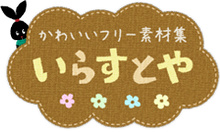Transitive and Intransitive Verbs
入る・入れる
Some Japanese verbs come in pairs, one being transitive and the other being intransitive. Here are some common examples, with the transitive verb on the left, and the intransitive on the right:
あける (to open something)・あく (something opens)
|
私は ドアを あけた。
|
ドアが あいた。
|
いれる (to put something in)・はいる (something or someone goes in/enters)
|
私は もう お金を いれた。
|
私は(へやに)入った。
|
おこす (to wake someone up)・おきる (someone wakes up)
|
私は おとうとを おこした。
|
おとうとが おきた。
|
おえる (to end something)・おわる (something ends)
|
私たちは 10時に 会ぎを おえる。
|
会ぎは 10時に おわる。
|
かえす (to return something)・かえる (somebody returns/goes home)
|
私たちは もう かりた本を かえしました。
|
トムさんは もう(家に)かえりました。
|
しめる (to shut something)・しまる (something shuts)
|
私は ドアを しめた。
|
ドアが しまった。
|
はじめる (to start something)・はじまる (something starts)
|
私たちは 10時に 会ぎを はじめる。
|
会ぎは 10時に はじまる。
|
Transitive verbs take a direct object (you do something to something), so are usually preceded by the particle, を.
Intransitive verbs can't take a direct object (because they're not doing something to something else), and they're often preceded by the particles が or は (or に to indicate direction of movement).
Intransitive verbs can't take a direct object (because they're not doing something to something else), and they're often preceded by the particles が or は (or に to indicate direction of movement).
|
Transitive - あける (to open something)
私は ドア を あけました。
|
Intransitive - あく (something opens)
ドア が あきました。
|
|
Transitive - しめる (to close something)
私は ドア を しめました。
|
Intransitive - しまる (something closes)
ドア が しまります。
|
|
Transitive - はじめる (to begin something)
私は きょ年 日本語のべんきょう を はじめました。
|
Intransitive - はじまる (something begins)
あしたの 会ぎは 10時から はじまります。
|

